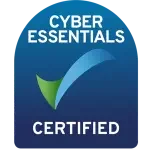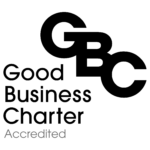
Join us as we explore the profound impact of voiceover and audio narration in eLearning content, and unlock the secrets to becoming an eLearning Voice Over Expert…
Are you ready to captivate your learners and take your eLearning courses to new heights? In the digital realm, the voiceover plays a pivotal role in setting the tone, conveying information, and keeping learners engaged throughout their educational journey. That’s why we’re here to share our expert advice on becoming an eLearning voiceover maestro.
IN THIS ARTICLE...
When to use Audio in eLearning
Knowing when to use audio in eLearning is crucial for creating an effective and engaging learning experience. Audio can serve as a powerful tool to captivate learners, reinforce key concepts, and facilitate information retention.
Here are a few reasons why understanding when to incorporate audio can significantly impact the success of your eLearning courses:
- Enhancing Learner Engagement: Audio adds a new dimension to the learning experience, immersing learners in a dynamic environment. By including audio elements such as voiceovers, sound effects, or background music, you can capture attention, stimulate curiosity, and create an emotional connection with the content. This heightened engagement helps learners stay focused, motivated, and actively involved throughout the course.
- Clarifying Complex Concepts: Some topics or subjects in eLearning may be intricate or abstract, making it challenging for learners to grasp the information solely through text or visuals. Audio can come to the rescue by providing verbal explanations, narrations, or guided instructions. Hearing a knowledgeable voice guiding learners through complex concepts can simplify understanding, clarify doubts, and enhance comprehension.
- Creating a Multimodal Learning Experience: People have different learning preferences, and incorporating audio accommodates those who are auditory learners. By presenting information through multiple modalities—text, visuals, and audio—you cater to diverse learning styles and ensure that all learners have access to the content in a format that resonates with them. This inclusive approach promotes better information retention and knowledge transfer.
- Adding Authenticity and Human Connection: The human voice carries a natural sense of authenticity and conveys emotions that can’t be replicated by text alone. By including audio elements like voiceovers or interviews with subject matter experts, you can infuse your eLearning courses with a personal touch. This human connection establishes trust, credibility, and a sense of relatability, fostering a deeper connection between the learners and the course content.
- Providing Accessibility for All Learners: Audio can significantly benefit learners with visual impairments or those who prefer audio-based learning. By incorporating audio descriptions, transcripts, or screen-reader compatibility, you make your eLearning courses accessible to a wider audience, ensuring that everyone can participate and benefit from the learning experience.
Remember, while audio can be a powerful addition to eLearning, it’s essential to use it purposefully and thoughtfully. Assess the content, learning objectives, and needs of your target audience to determine when audio will provide the most significant impact and enhance the overall learning experience.
eLearning Voice Over: Setting The Tone
Delivering the right tone is crucial when it comes to voiceover and narration. The voice should resonate with your target audience, creating an immersive and relatable learning experience. But how do you strike the perfect balance?
Start by asking yourself these simple yet powerful questions:
- Should the voice be male or female?
- Should the tone be delivered by a subject matter expert or with a light-hearted touch?
- Is it appropriate to enhance the narration with subtle background music?
How to Record Voice Over for eLearning
In addition to finding the right tone, understanding the recording process is equally essential for creating excellent eLearning voiceovers. To ensure your learners stay engaged and connected, pay attention to crucial factors such as pauses, speech patterns, and the overall energy of your voice artist.
As well as voice tone, it is critical to understand “how” to record the voiceover. Things to consider when recording an eLearning voiceover are: Is the voice artist pausing at the right time? Are their speech patterns upbeat and inspiring?
Top Tip: We don’t want learners to switch off! The listener needs to relate to the voiceover artist and trust what they are saying.
Remember, we want learners to hang on to every word, building trust and fostering a deep connection.
Becoming an eLearning Voice Over Expert
Now that you understand the importance of voiceover and how to record it effectively, let’s dive into our top tips for becoming an eLearning Voice-Over Expert. These insights will elevate your voiceover game and empower you to deliver exceptional eLearning experiences:
Taking all of the above voiceover planning points into account, here are our best tips to be an eLearning Voice Over Expert:
1. Crafting the Perfect Recording Environment
Discover how to optimize your recording space, whether it’s a dedicated studio or a makeshift setup. Here we’ll share practical tips for enhancing audio quality and minimizing background noise.
It would be best to have an environment that is conducive to recording audio. Not everyone has access to, or space to create a recording studio. If your options are limited, there are still things you can do to improve the sound.
Walls can deflect sound; soften them by adding curtains, blankets, or acoustic materials. If the need arises to record while traveling, a cheap yet effective way to absorb sound in a hotel room is to put a blanket over your head while recording! Check out the video below for more great advice about voiceover recording on the go…
Top Tip: Avoid hard surfaces; carpeted flooring absorbs sound better than wooden floors.
2. Use a Pop Filter for Voice Over Work
Learn the secret to eliminating those annoying popping sounds in your recordings and enhancing the clarity of your voice. A small investment in a pop filter can make a world of difference.
Popping sounds occur when pronouncing strong consonants at the beginning of words, such as the P in “parade”. A pop filter is a protection filter for microphones that reduces or eliminates those sounds and is relatively inexpensive.


3. Use a High-Quality Microphone for eLearning Narration
Say goodbye to subpar audio quality and embrace the power of professional-grade microphones. Discover the best eLearning narration and voiceover recording options that will leave your learners in awe.
Rather than using a laptop, phone, or computer’s built-in microphone (which typically has inferior audio quality), use a high-quality headset with a boom mic or desktop microphone (aka Streaming Microphones); designed for narration and voiceover recording.
4. Use a Noise Reduction Filter on Your Voice Recording Software
Noise happens, but it doesn’t have to ruin your recordings. Uncover the wonders of noise reduction filters in your recording software, allowing you to turn environmental challenges into audio excellence.
It’s rare to have complete control over environmental noise, such as HVAC systems, appliance sounds, cars going by, etc.
If your audio recording software has a noise reduction filter, you can create a “noise profile” of the segment containing the offending noise. The software then finds and replaces all instances with silence, resulting in a dramatic and favorable impact on the audio quality.
Voiceover Tips for Your Mobile Recording Setup
Step into the world of limitless possibilities as renowned learning technology expert Katrina Baker reveals the secrets to recording impeccable voiceovers from anywhere with a mobile recording studio. In this captivating video, Katrina takes you on a journey where creativity knows no boundaries and professional-quality audio is just a touch away.
Whether you’re a seasoned voiceover artist or a beginner looking to make your mark, prepare to be inspired as Katrina shares her expert techniques, tips, and tools for capturing exceptional voiceovers on the go.
Becoming an eLearning Voice Over Expert
We hope you find these tips on being an eLearning Voice Over Expert helpful. The narration of your eLearning courses is just as important as the content, so be sure not to scrimp when it comes to recording this well.
Are you ready to make your eLearning courses come alive with the power of your voice? Take action today and become an eLearning Voice-Over Expert. By implementing our expert tips and techniques, you’ll captivate learners, create immersive experiences, and deliver audio narration in eLearning that leaves a lasting impact.
Don’t let your voice remain unheard in the vast sea of eLearning. Step up, embrace your potential, and unleash the full force of your voice to inspire, educate, and empower. Your learners are waiting for an extraordinary learning journey, and you have the power to provide it.
So, are you ready to elevate your eLearning courses to the next level? Start your journey toward becoming an eLearning Voice-Over Expert now. Let your voice be the catalyst for transformation, and watch as your learners thrive under your guidance.
Take the leap and revolutionize your eLearning today. Your voice is the key that unlocks a world of limitless possibilities. Embrace it, refine it, and become the master of eLearning voiceovers. The time is now, and the future of engaging training is in your hands.
Intellek (formerly TutorPro) is a founding member of the learning technology industry. With a presence in the USA, UK, Canada, and the EU – for over 30 years we have pioneered the development of cutting-edge eLearning software and online training solutions, with a large and diverse portfolio of international clientele.
Disclaimer: We use all the tools available including generative AI to create relevant and engaging content.





